Learn Japanese from the News
Lessons on this site use content from the NHK WORLD JAPAN program "Learn Japanese from the News." Use the news to learn Japanese and take conversations to a new level.

Learn Japanese from the News
Lessons on this site use content from the NHK WORLD JAPAN program "Learn Japanese from the News." Use the news to learn Japanese and take conversations to a new level.
紙の名刺の代わりに、スマートフォンを利用する「デジタル名刺」のサービスを始める会社が増えています。ニュースに出てくる「代わりに」の使い方について学びましょう。
かみの めいしの かわりに、スマートフォンを りようする 「デジタルめいし」の サービスを はじめる かいしゃが ふえています。ニュースに でてくる 「かわりに」の つかいかたについて まなびましょう。
Kami no meeshi no kawari ni, sumaatofuon o riyoo-suru 「dejitaru-meeshi」no saabisu o hajimeru kaisha ga fueteimasu. Nyuusu ni detekuru 「kawari ni」no tsukaikata ni tsuite manabimashoo.
Today’s news story is about the increasing number of companies that are launching smartphone-based digital business card services as an alternative to paper business cards. Follow along and learn expressions related to 「代わりに (as an alternative)」.
紙の名刺の代わりに、スマートフォンを利用する「デジタル名刺」のサービスを始める会社が増えています。
Play

English
More companies are launching smartphone-based digital business card services as an alternative to paper business cards.
Explanation
The key expression here is 「の代わりに(no kawari ni)」.
「代わりに(kawari ni)」 is used to say that something is serving as a substitute for something else. Here, 「デジタル名刺(dejitaru-meeshi)」 are mentioned as “an alternative to paper business cards” 「紙の名刺の代わりに(kami no meeshi no kawari ni)」. We can use this expression for people too, for example, to say that someone will do something on your behalf. When you want to convey your gratitude, instead of 「代わりに(kawari ni)」, you can say 「お礼に(oree ni)」.
![]()
スタジオプレーリーは、プラスチックのカードを使うデジタル名刺を作りました。
Play

English
Studio Prairie has created a digital business card that uses a plastic(IC)card.
![]()
自分のカードの上にスマートフォンを置いてもらうと、自分の情報を送ることができます。
Play

English
You can send your information by having people place their smartphone on top of your card.
![]()
写真やビデオなどで情報を伝えることもできます。
Play

English
You can also share information in the form of photos, videos, and more.
![]()
Sansanは、会員になっている人の間でスマートフォンを近づけるだけで、自分の情報を伝えるサービスを始めました。
Play

English
Sansan has started a service that allows members to share their information simply by bringing their phones together.
![]()
働く場所や会社が変わったときには、相手のアプリにある自分の情報が自動で新しくなります。
Play

English
If your workplace or company should change, your information is automatically updated for contacts on the app.
![]()
service
サービス
saabisu
oneself
自分
じぶん
jibun
information
情報
じょうほう
joohoo
![]()
Shuffle
日
Japanese
E
English


ロン(Long)
最近日本の会社で働き始めた。ソフィアの後輩。
アン、一恵と同じマンションの住人。

ソフィア(Sophia)
ロンと同じ会社で働く先輩。子育てをしながら、日本で5年間働いている。

田中健司
ロンの上司。中学生と、小学生の2人の子どもがいる。

アン(An)
夫が日本で働くことになり、一緒に日本で暮らしている。小学生の娘がいる。

鈴木一恵
ロン、アンと同じマンションの住人。現在は一人暮らし。
Sophia is about to exchange business cards with a new client, when to her surprise, they ask her to take out her smartphone.

ソフィア:本日はお時間をいただき、ありがとうございます。ソフィアと申します。よろしくお願いいたします。
Play
Show

English
Thank you very much for your time today. I’m Sophia. It’s very nice to meet you.
Explanation
「本日はお時間をいただき、ありがとうございます。」
(Honjitsu wa ojikan o itadaki, arigatoo gozaimasu.)
This expression is used to show gratitude to the other party for setting aside time in their busy schedule for you. By saying thank you at the beginning of an interview with a superior or a business meeting with a client, you can make a good impression. It is not necessary to use this expression when you were invited by the other party. You can also use the similar expression 「お時間を割いていただき」. This conveys gratitude to someone for taking time out of their day for you, when they could have used it for other activities or work. For example, a lecturer may use this expression at the beginning of a seminar.
![]()

取引先の人:よろしくお願いいたします。あの、ソフィアさんはスマートフォンをお持ちですか。
Play
Show

English
The pleasure is ours. Umm, do you have a smartphone, Sophia?
![]()

ソフィア:はあ。
(スマートフォンをポケットから出す)
Play
Show

English
Yes...
(Takes out smartphone from her pocket)
![]()

取引先の人:こちらが私の名刺です。
(カードを出して)
このカードの上にスマホをおいてみてください。
Play
Show

English
This is my business card.
(shows business card)
Please place your smartphone on top of this card.
![]()

ソフィア:あっ、名刺の情報が私の携帯に来ました! デジタル名刺は便利ですね。
Play
Show

English
Wow, I just got your info on my phone! Digital business cards are very convenient.
![]()

取引先の人:デジタル名刺は、スマホの充電さえきちんとしていれば、安心です。
Play
Show

English
As long as you have your smartphone charged, digital business cards are great.
![]()

ソフィア:なるほど、環境にもやさしいですね。それに、これだと名刺が切れることがないからいいですね。
Play
Show

English
I see, and they are eco-friendly, too. And you can never run out of business cards.
Explanation
「●●●が切れる」(●●●ga kireru)
「切れる」 is a verb used to refer to a specific action such as 「ハサミで切ることができる (can cut with scissors)」, but it also has the meaning “to finish” or “to interrupt.” Here, it is used to show that something that is used continuously is temporarily lacking. 「名刺が切れる」means that she has used up all of her business cards and has not yet printed out a new batch.
![]()

取引先の人:ただ、スマホを持っていない方もいるので、一応、紙の名刺も持っているんです。
Play
Show

English
The thing is, there are people who don’t have a smartphone, so we carry paper business cards just in case.
![]()

ソフィア:そうなんですか。
Play
Show

English
I see.
![]()

取引先の人:(苦笑いしながら)
紙の名刺も作っているから、環境にやさしいかどうかは微妙ですね。
Play
Show

English
(nervous laughter)
Because we have both, it’s hard to say if we are really eco-friendly.
Explanation
「微妙ですね」(Bimyoo desu ne.)
「微妙」 is a term originally used to describe a situation that is 「趣が深く、何とも言えない美しさや味わいがあるような様子(something that is deeply atmospheric and has an undescribable beauty or taste)」. However, in conversation, we use it when asked for an opinion or impression as a way to say that the difference is too small to be clearly expressed, or that the situation is complicated. Here, the client uses it to express that they are aware they are not entirely eco-friendly, as they also carry paper business cards.
![]()
![]()
![]()
Play All
![]()
Show All
![]()
Reset